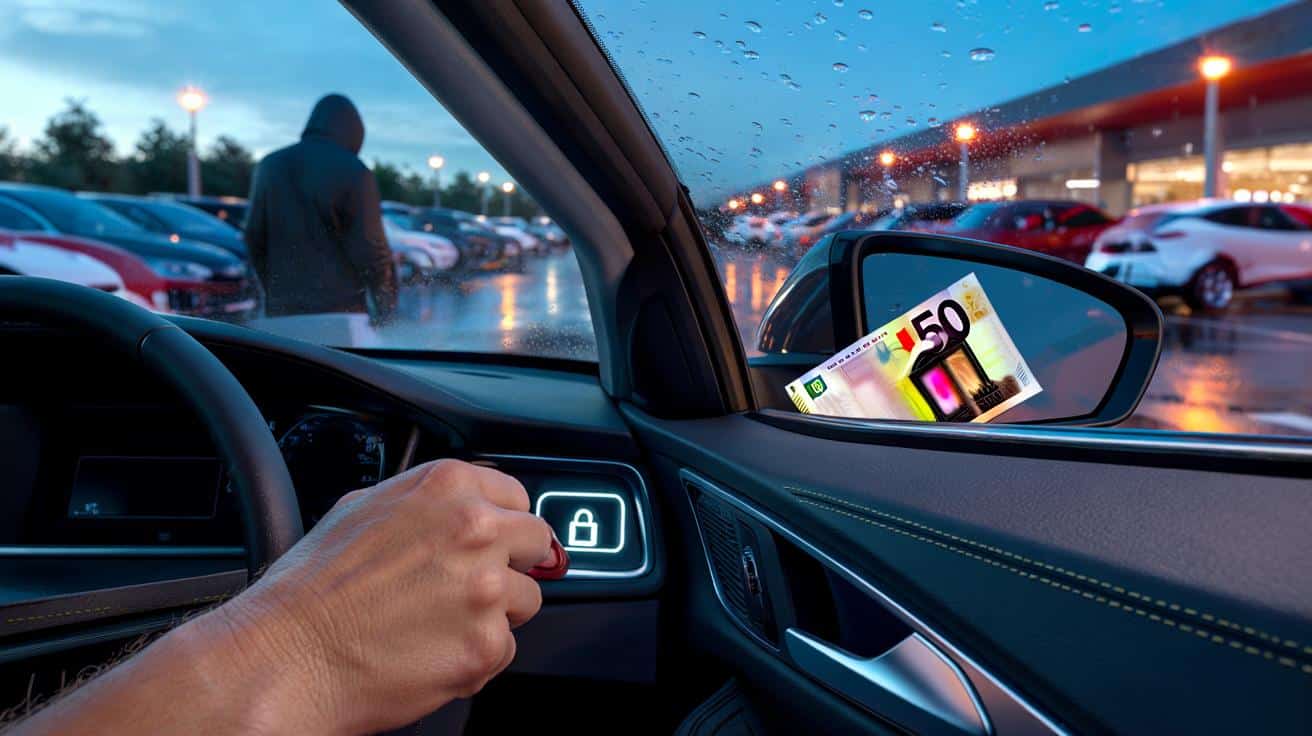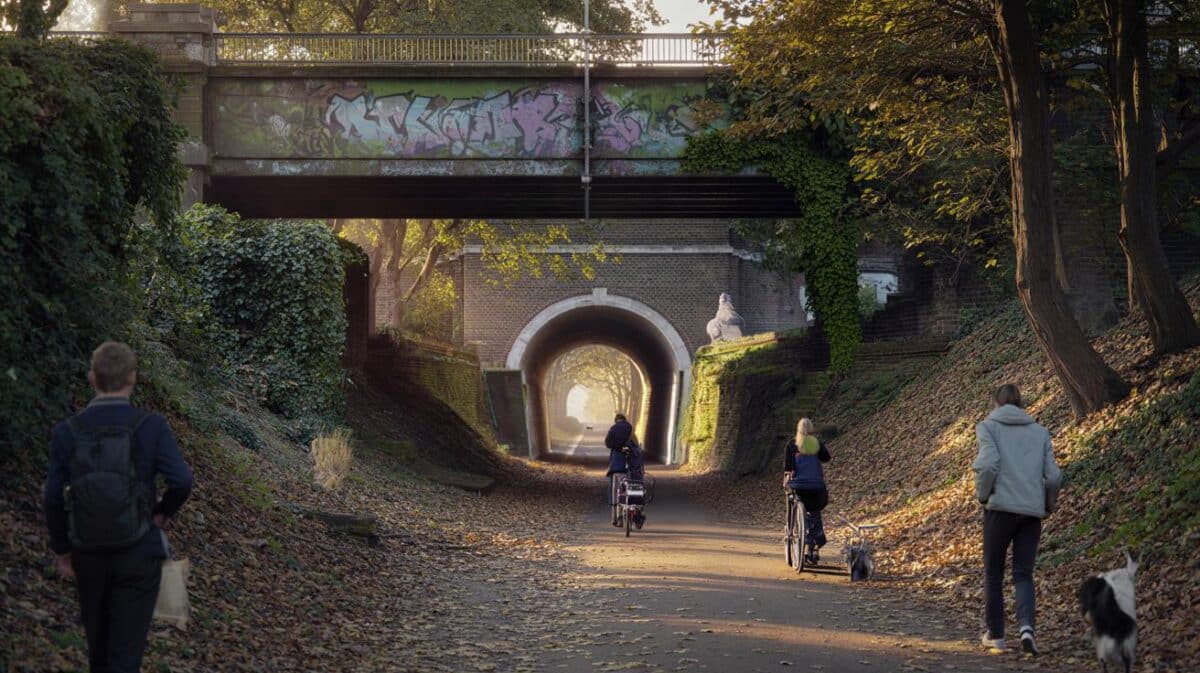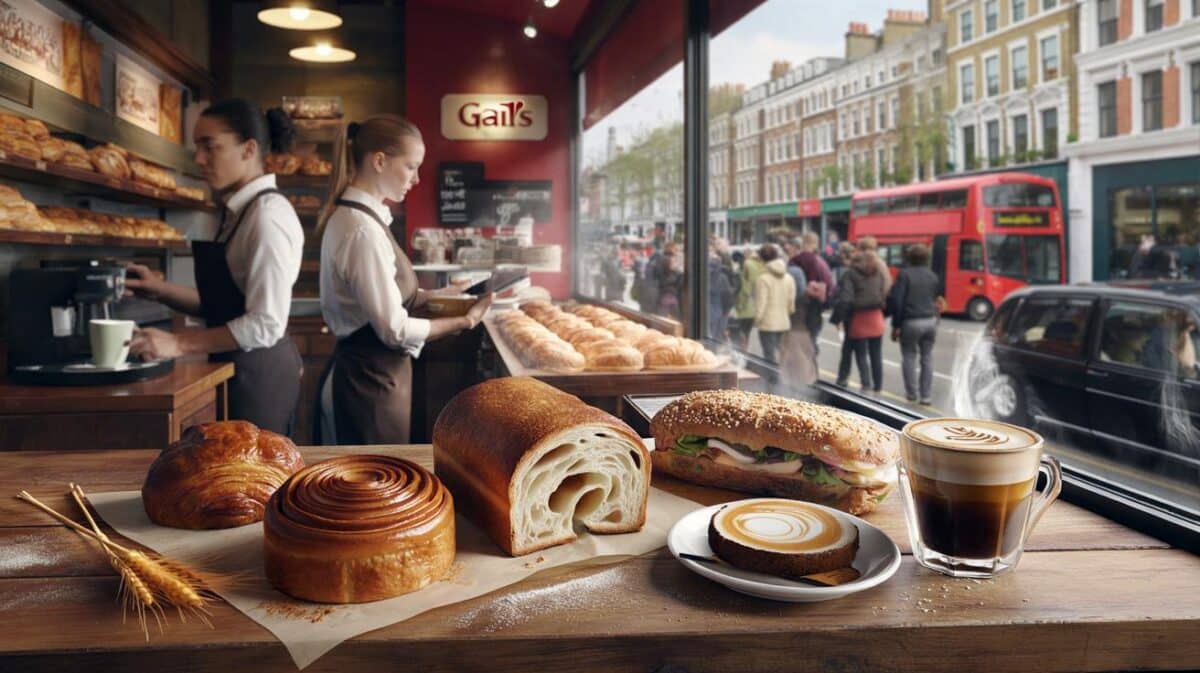In busy car parks, that split-second surprise can cost you dearly.
You glance up, spot the yellow €50, and your hands move before your head. That snap decision is exactly the gap thieves plan for, and they only need seconds.
What criminals do with a €50 note
Teams place a €50 note where it’s hard to spot from outside but obvious from the driver’s seat. You start the car, see the cash, and instinct kicks in. You open the door, get out, and turn your back on the cabin. At that moment, an accomplice moves. They reach in for a bag or a phone. In some cases, they slip behind the wheel and drive away.
Resist the urge to step out. The “free money” is bait, not a windfall.
Organised groups favour supermarket car parks, petrol stations, park-and-ride sites and motorway services. They watch for routine. They wait for haste. Your habits become their timetable.
Why €50 hooks your brain
Fifty euros feels plausible and valuable. A fiver barely tempts. A hundred raises suspicion. €50 sits in the middle, where greed and realism overlap. That’s why it works.
Unexpected cash triggers a reward response. Focus narrows to the prize. Situational awareness fades. The move to open the door becomes automatic. Knowing that reflex helps you interrupt it.
Two seconds of pause beats two hours of police reports. Say it before you move: lock first.
Your five-step safe response
- Stay in the seat, keep calm, and press the central lock.
- Switch off the engine if you’ve started it; keep the key on you.
- Scan mirrors and side windows; check blind spots for anyone loitering.
- If someone approaches, sound the horn or flash hazards to draw attention.
- Drive to a busy, well-lit spot. Park, lock, then remove the note and assess.
If in doubt, drive away — not out. The note will wait. Thieves will not.
Seven risks crammed into a few seconds
- An unlocked door gives instant access to your handbag, wallet or phone.
- A pushed start button or stolen key can move the car before you react.
- A grab at the boot switch can expose luggage you meant to hide.
- A distraction partner can spill a drink or point at a tyre to split your focus.
- Your PIN, saved in a phone or wallet, can be used before you block cards.
- Vehicle papers in the glovebox can help clone identities and sell the car.
- Confrontation risk rises if you challenge the team; they want speed, not drama.
Common car-park distraction ploys
| Scenario | What they want | Your best move |
|---|---|---|
| Note under wiper or “please call us” slip | Make you exit and leave doors open | Lock, drive somewhere safe, check later |
| “Your rear light is out” or “your tyre looks flat” | Get you to bend down while they reach in | Lock first; check in a secure, lit area |
| Spilled drink on clothing at the pump | Distract for pickpocketing or key grab | Step back, decline “help,” keep distance |
| Loud knock and “smoke from the bonnet” | Startle you into leaving the cabin open | Turn off engine, lock, look before exiting |
Prevention that actually works
- Keep valuables out of sight before you arrive. Best place: locked boot.
- Always lock the car, even for 30 seconds at a ticket machine or pump.
- Use a signal-blocking pouch for keyless fobs to deter relay theft.
- Favour bright, busy bays over corners and blind spots.
- Consider a dashcam within local privacy rules; position it discreetly.
Order of operations matters. When you arrive, put bags in the boot first, then get in. When you leave, engine off, key in hand, lock the car, then open the boot. That sequence removes the gap criminals target.
If you think you were targeted
Call and secure
- In an emergency or if a theft is in progress, call 999. If the incident has passed, use 101 to report.
- Block bank cards immediately via your provider. Use the number on your card issuer’s app or website.
- Lock and locate your phone using Find My or Google’s device manager; trigger remote wipe if needed.
- Report lost ID, driving licence and vehicle documents without delay.
- Notify your insurer and record the claim reference and any deadlines.
Gather details while memory is fresh: time, place, direction of any suspect vehicle, partial plates, clothing, accents, and any CCTV in the area. Photos of the note and your parking spot can help.
Insurance basics in the UK
Comprehensive policies usually cover theft of the vehicle and damage from a break-in. Cover for personal belongings varies widely and often carries a limit and excess. Items left on display may be excluded. Third-party, fire and theft generally won’t cover loose items inside the cabin.
- If the car was left unlocked or with the key in the ignition, claims can be rejected.
- Some policies extend to factory-fitted audio or navigation systems; aftermarket gear may not be included.
- Read your wording, note the evidence required, and keep receipts or serial numbers.
Found money and your legal duty
Cash found in public should be handed to police or a proper lost property office. Keeping it can amount to misappropriation. Personal safety comes first, so move to a safe place before handling anything on the vehicle. If you later retrieve the note, treat it as found property and report it.
Why we fall for it and how to retrain your reflex
Humans crave certainty and quick wins. A surprise €50 promises both. Your attention narrows, your hand moves, and the cabin stays open. You can rewire that reflex with a simple verbal cue and a tiny pause.
Say it every time you start the car: “Lock first, look, then move.”
Practise the drill in a quiet car park. Lock. Look left, right and behind. If anything feels off, leave the note and go. Repeat the routine until it becomes automatic protection.
Extra tips for modern cars
- For keyless entry, consider “sleep” pouches at home and a steering lock on the street.
- Disable passive entry in the settings if your routine makes you a predictable target.
- Name your phone and tracker discreetly; avoid labels like “John’s iPhone – Car Keys.”
If you often stop at the same forecourt or bay, vary your pattern. Thieves watch for predictability. A small change in routine, combined with the five-step response, shuts the window they rely on.








Defintely bookmarking this. Thanks for the clear five-step drill— »lock first » is now my mantra. I nearly fell for the €50 trick at a supermarket last month; a quick horn blast scared them off. Sharing with family and our car-share group.
Is this actually common, or just an urban legend with better branding? Any stats, police bulletins, or case numbers to cite?